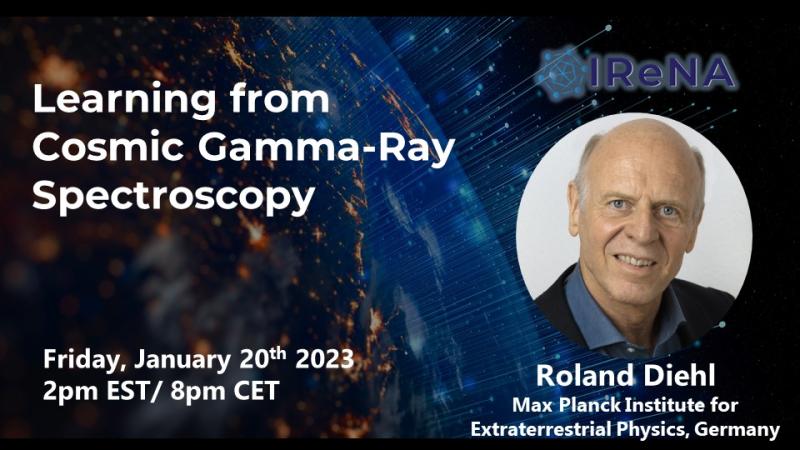Data
You will be redirected to cenamweb.org in 15 second(s). The JINA-CEE website is not updated anymore. The archived website can still be reached through the CeNAM website.
Learning from cosmic gamma-ray spectroscopy featuring Roland Diehl (MPE, Germany)

Gamma rays from nuclear lines are the most-direct astronomical messenger for the occurrence of nuclear reactions in cosmic sites, next to neutrinos.
Characteristic lines from radioactive decays have been measured with space-borne telescopes, most-recently with ESA’s INTEGRAL mission, for the isotopes 56Ni, 57Ni, 44Ti, 26Al, and 60Fe.
These span a half-life range from a few days to millions of years. We have learned about supernova explosion physics (from the shorter-lived species), and about ejecta transport (from the long-lived ones). Positron annihilation gamma rays have contributed more and independent information on the latter. Other nuclear lines would be expected, e.g. from cosmic-ray interactions, but still are lower in intensity than instrumental sensitivities.
In this talk we will discuss the lessons and challenges in context of nucleosynthesis sources and of properties of our Galaxy.
